Themed collection Silk and silk-inspired materials

Taking tissue adhesives to the future: from traditional synthetic to new biomimetic approaches
This review focuses on the adhesive’s performance, both in synthetic and biomimetic approaches including mussel, sandcastle worm and gecko inspired.
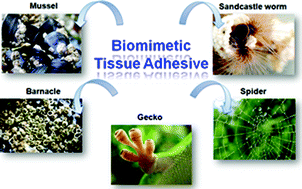
Biomater. Sci., 2013,1, 239-253
https://doi.org/10.1039/C2BM00121G
Thixotropic silk nanofibril-based hydrogel with extracellular matrix-like structure
We present an injectable hydrogel based on silk fibroin (SF) nanofibrils which may offer benefits for cell encapsulation and delivery.
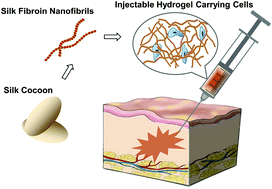
Biomater. Sci., 2014,2, 1338-1342
https://doi.org/10.1039/C4BM00214H
Photo-controlled water gathering on bio-inspired fibers
We report photo-controlled water gathering on bio-inspired fibers.
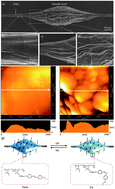
Soft Matter, 2013,9, 9294-9297
https://doi.org/10.1039/C3SM51517F
Silk fibroin gelation via non-solvent induced phase separation
The metastable nature of reconstituted silk fibroin (RSF) and its sensitivity to the solvent quality were explored to prepare hydrogels and porous foams that could be useful for the encapsulation of cells and/or hydrophilic and hydrophobic drugs.

Biomater. Sci., 2016,4, 460-473
https://doi.org/10.1039/C5BM00471C
Differential scanning fluorimetry illuminates silk feedstock stability and processability
Molecular probes affect the folding patterns of silk proteins in three generic ways giving novel insights into the material and its potential as benchmark in synthetic biology.
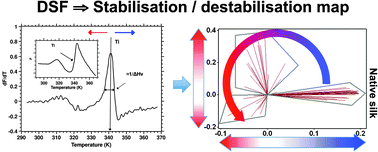
Soft Matter, 2016,12, 255-262
https://doi.org/10.1039/C5SM02036K
Self-recovering caddisfly silk: energy dissipating, Ca2+-dependent, double dynamic network fibers
Single silk fibers of the caddisfly larvae self-recover their initial modulus and length after pseudo-plastic deformation due to two independent Ca2+-crosslinked networks.
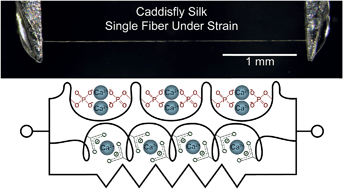
Soft Matter, 2015,11, 1667-1676
https://doi.org/10.1039/C4SM02435D
Enhanced cellular uptake of engineered spider silk particles
Drug delivery systems allow tissue/cell specific targeting of drugs in order to reduce total drug amounts administered to an organism and potential side effects upon systemic drug delivery.
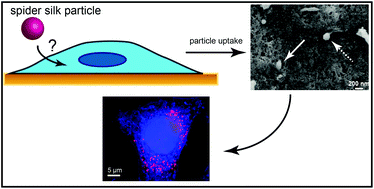
Biomater. Sci., 2015,3, 543-551
https://doi.org/10.1039/C4BM00401A
Rheology of reconstituted silk fibroin protein gels: the epitome of extreme mechanics
Reconstituted solutions of silk protein are transformed into gels with significant elastic recovery and strain hardening features.
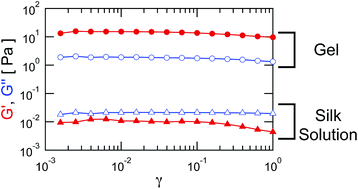
Soft Matter, 2015,11, 756-761
https://doi.org/10.1039/C4SM02079K
Understanding the variability of properties in Antheraea pernyi silk fibres
We investigate the origin of variability in as-reeled natural silk fibres from different individuals using dynamic mechanical thermal analysis combined with polar solvent penetration.
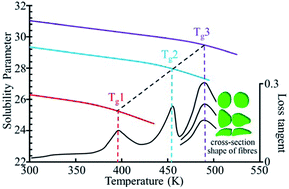
Soft Matter, 2014,10, 6321-6331
https://doi.org/10.1039/C4SM01172D
Prediction of the structure of a silk-like protein in oligomeric states using explicit and implicit solvent models
Our simulation results show that the conformation of our silk-like protein changes upon self-assembly into aggregates containing more than two proteins. We find that self-assembly of the proteins is cooperative.
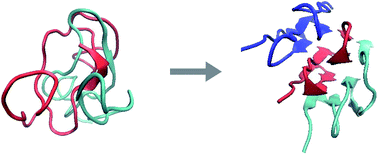
Soft Matter, 2014,10, 5362-5374
https://doi.org/10.1039/C4SM00384E
What makes spider silk fibers so strong? From molecular-crystallite network to hierarchical network structures
The breakage of animal silk fibers is studied using a Hierarchical Network (HN) model, in which the breaking mechanism is described from the molecular nanoscale to the nano-micro-scale.
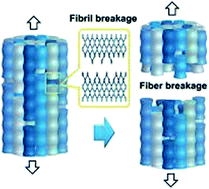
Soft Matter, 2014,10, 2116-2123
https://doi.org/10.1039/C3SM52845F
Inverse temperature transition of elastin like motifs in major ampullate dragline silk: MD simulations of short peptides and NMR studies of water dynamics
NMR two-dimensional relaxation studies and MD simulations are used to probe the distribution, dynamics, populations and thermal behavior of water in major ampullate spider dragline silk.
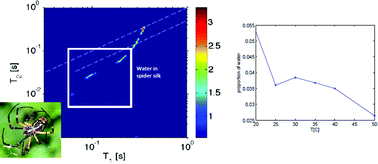
Soft Matter, 2014,10, 773-785
https://doi.org/10.1039/C3SM52001C
Comparison of four synthetic model peptides to understand the role of modular motifs in the self-assembly of silk fibroin
The effects of the modular motifs on β-sheet formation of silk fibroin self-assembly were: GS6 > GS10 > GY8 > GY6.
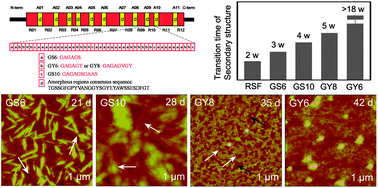
Soft Matter, 2013,9, 11325-11333
https://doi.org/10.1039/C3SM51498F
Controllable cell adhesion, growth and orientation on layered silk protein films
Due to their mechanical stability, biocompatibility and biodegradability, silks are promising materials for various biomedical applications including tissue engineering.
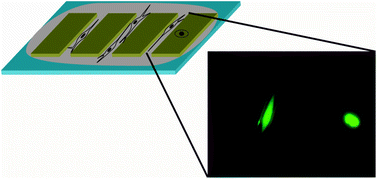
Biomater. Sci., 2013,1, 1244-1249
https://doi.org/10.1039/C3BM60114E
Transparent and airtight silica nano- and microchannels with uniform tubular cross-section
Tight silica nano- and microchannels with uniform tubular diameters were fabricated from different fiber templates. Flow of liquids was monitored by confocal microscopy and described by the Lucas–Washburn equation.
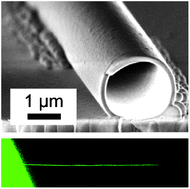
Soft Matter, 2013,9, 9824-9832
https://doi.org/10.1039/C3SM51082D
Surface properties of spider silk particles in solution
The colloidal properties of spider silk particles prepared from eADF4(C16) have been analyzed concerning their application in pharmaceutical formulations. Electrostatic and steric forces provide stability over a large range of pH and ionic strength.

Biomater. Sci., 2013,1, 1166-1171
https://doi.org/10.1039/C3BM60109A
Micromechanical characterization of spider silk particles
The mechanical properties of eADF4 particles show dependence on crosslinking, molecular weight and hydration state, which offers multiple tuning possibilities for potential applications.
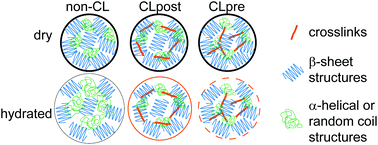
Biomater. Sci., 2013,1, 1160-1165
https://doi.org/10.1039/C3BM60108K
Enhanced rigidity and rupture strength of composite hydrogel networks of bio-inspired block copolymers
Self-assembled composite networks of silk-like fibers in a soft physical network show enhanced modulus and toughness.

Soft Matter, 2013,9, 6936-6942
https://doi.org/10.1039/C3SM00091E
Effect of sodium chloride on the structure and stability of spider silk's N-terminal protein domain
Sodium chloride prevents premature silk protein assembly in the spider’s spinning gland by affecting inter-terminal domain salt bridges.
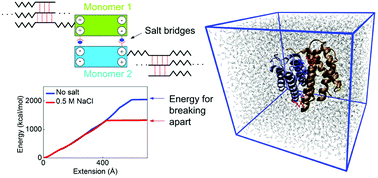
Biomater. Sci., 2013,1, 276-284
https://doi.org/10.1039/C2BM00140C
Evidence by infrared spectroscopy of the presence of two types of β-sheets in major ampullate spider silk and silkworm silk
Infrared spectroscopy coupled with hydrogen–deuterium exchange has allowed us to quantify the content of crystalline and interphase β-sheets in spider major ampullate silk and silkworm silk.

Soft Matter, 2013,9, 208-215
https://doi.org/10.1039/C2SM26657A
Effect of regeneration of liquid silk fibroin on its structure and characterization
The molecular structure and properties of the regenerated silk fibroin suffer severely from the silk degumming and fiber dissolution systems.
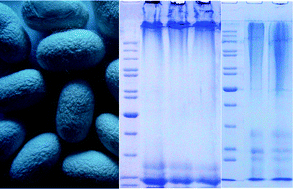
Soft Matter, 2013,9, 138-145
https://doi.org/10.1039/C2SM26945G